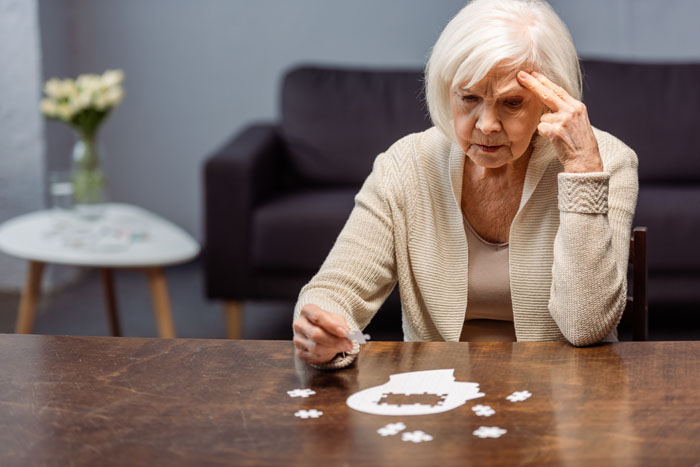Day to Day Living With Parkinson’s Disease

Living with Parkinson’s disease (PD) involves managing both the physical and emotional challenges that come with the condition. While each person’s experience is unique, there are common aspects of daily life that people with Parkinson’s and their caregivers might encounter. Here’s an overview of day-to-day living with Parkinson’s disease:
1. Managing Symptoms:
- Medication Routine: Regular medication is essential for managing symptoms. People with Parkinson’s often need to take medications like levodopa at specific times to control motor symptoms such as tremors, stiffness, and slowness of movement.
- On-Off Fluctuations: Medications may lead to “on” periods when symptoms are well-controlled and “off” periods when symptoms return. Managing these fluctuations can be challenging and may require adjustments in medication timing or dosage.
- Exercise: Regular physical activity, like walking, swimming, or specialized exercises (e.g., tai chi, yoga), can help maintain mobility, balance, and overall health. Exercise also helps manage non-motor symptoms like depression and anxiety.
2. Mobility and Safety:
- Balance and Coordination: Parkinson’s can affect balance, increasing the risk of falls. Installing grab bars in the bathroom, removing tripping hazards, and using assistive devices like walkers or canes can enhance safety.
- Freezing: Some people experience “freezing,” where they feel stuck in place and unable to move. Strategies like visual cues, rhythmic counting, or stepping over objects can help overcome freezing episodes.
- Daily Activities: Simple tasks like dressing, eating, or writing can become difficult. Occupational therapy can provide strategies and tools to make these tasks easier, such as using button hooks, adaptive utensils, or large-handle pens.
3. Cognitive and Emotional Health:
- Cognitive Changes: Parkinson’s may affect memory, attention, and problem-solving skills. Engaging in mental exercises, such as puzzles, reading, or learning new skills, can help keep the mind active.
- Depression and Anxiety: These are common non-motor symptoms. It’s important to seek support from mental health professionals, participate in support groups, and consider therapy or medication if needed.
- Sleep Disturbances: People with Parkinson’s often experience insomnia, restless legs, or REM sleep behavior disorder. Good sleep hygiene, medication adjustments, or a consultation with a sleep specialist can help manage these issues.
4. Diet and Nutrition:
- Balanced Diet: A well-balanced diet rich in fruits, vegetables, whole grains, and lean proteins is important for overall health. Some people with Parkinson’s may need to avoid high-protein meals close to their medication times, as protein can interfere with the absorption of levodopa.
- Hydration: Staying hydrated is crucial, especially since dehydration can worsen symptoms like constipation, which is common in Parkinson’s.
- Swallowing Difficulties: Dysphagia (difficulty swallowing) can occur as the disease progresses. A speech therapist can provide exercises and dietary recommendations to manage this.
5. Social Life and Relationships:
- Maintaining Social Connections: Staying socially active is important for mental and emotional well-being. Participating in group activities, hobbies, or support groups can help maintain a sense of community.
- Communication: Parkinson’s can affect speech, making it softer or more monotone. Speech therapy can help improve vocal strength and clarity. Family and friends should be patient and understanding, allowing time for the person to express themselves.
- Caregiving: Caregivers play a crucial role in day-to-day living. They need support and respite to maintain their own health and well-being. Open communication about needs and boundaries is essential for both the person with Parkinson’s and their caregivers.
6. Healthcare Management:
- Regular Medical Appointments: Ongoing care from a neurologist, physical therapist, occupational therapist, and other healthcare professionals is important for managing the progression of the disease and adjusting treatments.
- Advanced Therapies: For some, deep brain stimulation (DBS) or other advanced treatments may be considered to manage symptoms that are not well-controlled by medication alone.
7. Planning for the Future:
- Advanced Care Planning: As Parkinson’s is a progressive disease, it’s important to consider future care needs. This might involve discussing long-term care options, legal considerations (like power of attorney), and financial planning.
- Living Adaptations: Homes may need modifications to accommodate changing mobility needs, such as installing ramps, widening doorways, or adding stairlifts.
8. Emotional Resilience and Adaptation:
- Positive Mindset: While living with Parkinson’s is challenging, maintaining a positive outlook, staying informed, and adapting to changes can significantly impact quality of life.
- Support Systems: Leaning on support networks, including family, friends, support groups, and professional counselors, can provide emotional strength and practical help.
In summary, day-to-day living with Parkinson’s disease involves managing a complex interplay of motor and non-motor symptoms, maintaining physical and mental health, ensuring safety, and staying connected with loved ones and healthcare providers. With proper support and adaptive strategies, many people with Parkinson’s continue to lead fulfilling lives.
Here are some additional resources that may be helpful:
- Parkinson’s Disease Foundation: https://www.parkinson.org/
- American Parkinson’s Disease Association: https://www.apdaparkinson.org/
- National Parkinson Foundation: https://www.parkinson.org/
- Michael J. Fox Foundation: https://www.michaeljfox.org/
Find Retirement Communities In Sedona
Sedona Winds Retirement Community offers independent living in Sedona, Arizona, can help! Call us today at (928) 496-6547 and learn more about our facility and what we have to offer today’s seniors.

